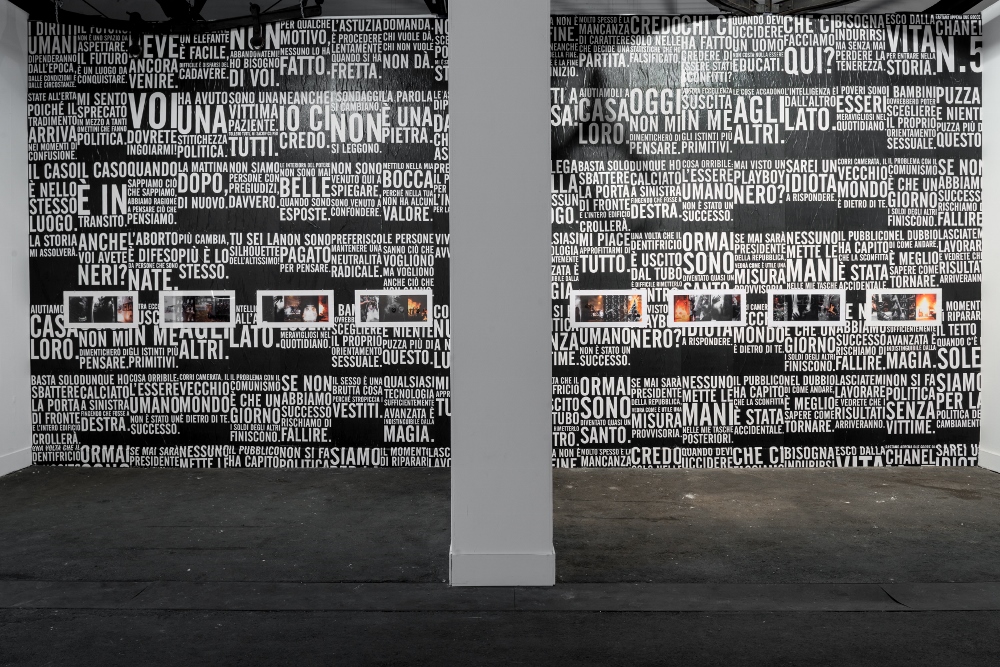Una mostra di Dias&Riedweg interroga la questione identitaria a partire da quella migrante, proponendo uno scarto laterale e un ripensamento radicale delle nostre idee di tempo e spazio. Un percorso artistico e >…
The home of the others does not exist
An exhinition by Dias & Riedweg

With a double solo exhibit curated by Anna Cestelli Guidi, held from December to January, the artistic duo Dias&Riedweg presented their work in Italy for the first time. The artistic research of the Brazilian Mauricio Dias and the Swiss Walter Riedweg has always been centred around issues and themes relating to identity, culture, colonialism, migration and the other, developed in Rome in two exhibitions, the titles of which are very suggestive: Other Time Than Here. Other Place Than Now (at the Macro Testaccio), and Funk Staden (at the Auditorium Parco della Musica).
While for the latter Mauricio and Walter presented an installation commissioned for Documenta_12, in Kassel, centred around Brazil’s colonial history, in Testaccio a series of installations, videos, objects and photographs, dating from 1999 to the present, articulated and revealed the various facets of migration, placing it as an optical vertex through which to read the transformations of a contemporary world that is always not-finished and in motion. If migration produces a spatial and temporal dislocation, effectively conveyed by the logical disjunction that serves as title of the exhibition, global polities continue to draft and erect walls and to promote identitarian principles that are constitutively fascist, continually conjuring temporal, spatial and subjective frontiers which are meant to be substantial and impassable.
Fortresses that have already tragically marked our history reappear today, more dangerously, to narrate the times we live in. Starting from what is the real heart of darkness of western culture, colonialism, and obviously from what it has repressed. What is repressed, however, always resurfaces and today it is pressing, with increasing insistence, to shatter those borders and walls with which the capitalist principle of command would like to contain the right to flee and to mobility that turns our time into another space, and our space into many different times.
Also, the pace of the exhibition is set by the video objects Suitcases for Marcel (2007), by the video installation Moving Truck (2009 – 2012), and by the wall paper Bloc (2014), which articulate the theme of spatial and temporal dislocation and the ironic criticism of global policies. To this end the exhibit held in Rome was prepared by an urban exploration that led the artists to visit the occupied buildings of an ex penicillin factory in Ponte Mammolo, the ex cold cut factory Fiorucci in Via Prenestina, today a migrants’ city that houses MAAM, a contemporary arts museum, and finally Baobab, a centre for refugees.
From this field research the work on Rome was born, specifically planned for this exhibition, titled La casa degli altri (the home of the others): a large and suggestive installation in which on top of a surface made of fragments and ruins of lives gone adrift, two large screens show alternating images of the spaces visited by the artists: the narration of the authors does not entail an only point of view, but one that simultaneously frees more points of view, because only a kaleidoscope of perspectives is able to grasp the perception of reality in all its unauthenticity, indeed the things of the world are always unauthentic and opaque, despite all mythologies of authenticity. This installation can be identified as being the true home of the others only by a point of view that presents itself as the only one, a clear one, because only a vision pivoting on the principle of identity can see the other, where in fact there are only and always many others.
I is another, wrote the great poet who revolutionized contemporary poetry (I is an Other / Be the Other is the title of an exhibition inspired to him, curated by Simon Njami, at the National Gallery), because there is no I that is not other than itself, no I that is not also a prison from which to escape, and so there is no other. If there is no other, neither can there be the home of this other, not even as a speech act. The many others who constitute the multitude of singularities we are, have no home and no specific language. Home is the common home, continuously rebuilt by relations that are incessantly woven and negotiated and that, together with the use and transformations of the many spoken languages, constitute the fabric of our reality. In this sense, we can say that Mauricio Dias and Walter Riedweg are deeply anti-heideggerian, and altogether materialist. And again, insisting along this line of thought, just as there is no other, there is no time or space other than a spatial and temporal cut out continuously modified by the bodies that, in transit, are traversing it.
This is indeed the secret of Dias&Riedweg’s work, who are able to grasp the most important political challenge of our times with their visionary approach. A challenge that requires first of all an introduction to a non-fascist life, as Michel Foucault called it. And this is how we might define their Roman exhibition. Which is also an archive of the memories of many others. And, finally, a lesson on what it means, and how to, engage in politics with art and poetry. Without using language as mere pedagogy, or to ideologically represent reality.
Translated by Emma Catherine Gainsforth







condividi